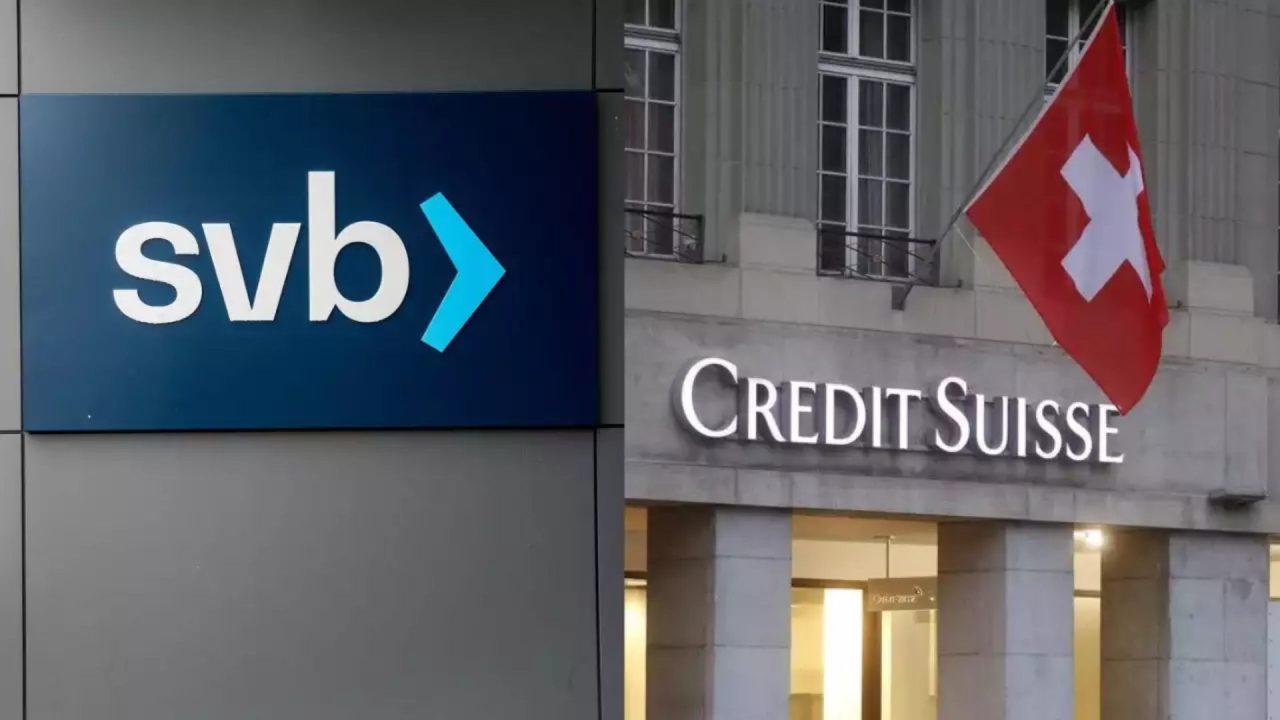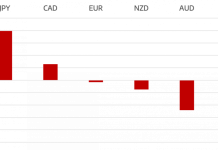Are We In A Banking Crisis? Factors Challenging The Current Banking System – The article critically analyses the recent crashes in financial markets and its effects on the investors and the future of banking.

The recent purchase of UBS by Credit Suisse for $3.2bn raised serious concerns about global banking. The share deal includes extensive government-backed guarantees and liquidity, marking a 99% decline in the share price for Credit from its peak in 2007.
Following the multi-billion dollar losses with the collapse of investment fund Archegos and Greensill Capital on 15 March, their largest investor was not willing to extend any more support, thereby declining the company’s share price by 24%.
The Silicon Valley Bank (SVB), which had $212bn of assets, failed with spectacular speed on March 10th, making it the collapse of the biggest lender since the global financial crisis of 2007-09. SVB probably had enough assets for depositors to have got all or almost all of their money back—but only after a long wait.
This had significant effects on Stock markets, creating a ripple effect, particularly because banking stocks contribute the largest share in the markets. The turmoil in banking stocks also triggered drops in yields for US Treasuries and Eurozone bonds, and gold prices renewed their recent rally as investors sought safe havens. Even Bitcoin market gained $26 billion, hitting a 9-month high.
So what has brought us to this crisis point?
Are We In A Banking Crisis? Factors Challenging The Current Banking System – Clearly, the largest contributors were the rampant inflation, the after-effects of COVID-19, and the war in Ukraine, which constantly impacted bonds used by Banks to manage their liabilities, cash flows, and deposits.
The SVB Crash
Are We In A Banking Crisis? Factors Challenging The Current Banking System – Most of Silicon Valley Bank depositors were Bay Area tech startups, with accounts with more than $250,000 and insured by the federal government. The run on the bank was rational.
Also, Laura Izurieta stepped down from her role as CRO of SVB Financial Group in April 2022, and formally departed the company in October, according to an SVB proxy filing. The bank appointed her permanent successor as CRO, Kim Olson, in January of this year. The question is, however, ‘Did this transition and oversight be a contributing factor to the SVB collapse’?
The core problem with SVB?
Are We In A Banking Crisis? Factors Challenging The Current Banking System – By loading up on long-term bonds, SVB had taken an enormous unhedged bet on interest rates staying low. This bet went very wrong, making SVB technically insolvent. This resulted in shareholders being wiped out and bondholders taking big losses. Apparently, this is not a failure of the financial system, but a bad business that has been allowed to collapse.
The Signature Bank Failure
Are We In A Banking Crisis? Factors Challenging The Current Banking System – After Silicon Valley Bank failed, depositors became nervous about Signature Bank’s health, owing to its high amount of uninsured deposits as well as its exposure to crypto and other tech-focused lending. By the time it was closed by regulators, Signature was the third-largest bank failure in U.S. history.
The closure of Signature Bank has also created some technical challenges for companies in the crypto market since the bank operated Signet, a payments system that provided 24/7 access and was used by many crypto companies for fiat currency, both on-ramps and off-ramps. The company worked with Circle, Coinbase, OKX and others.
Mitigation mechanisms followed by banks
Are We In A Banking Crisis? Factors Challenging The Current Banking System – To manage the risk of rising interest rates and inflation, banks typically use a process called asset-liability management (ALM). This involves matching the duration of their assets, such as bonds, with the duration of their liabilities, such as deposits.
In an inflationary and rising interest rate environment, banks need to adjust their ALM strategies. They may choose to hold shorter-term bonds, which are less sensitive to interest rate changes, or they may consider other assets that are less affected by inflation, such as real estate or commodities.
Additionally, banks can use interest rate swaps and other financial instruments to hedge against interest rate risk. This involves entering into an agreement with another party to exchange cash flows based on changes in interest rates, which can help offset losses from changes in bond values. In the case of SVB, top-tier investment banks were their advisors and how did such elementary mistakes in the bond portfolio be allowed to be implemented?
What is Asset-liability management?
Are We In A Banking Crisis? Factors Challenging The Current Banking System – Asset-liability management (ALM) is a key strategy for managing risk on a bank’s balance sheet. ALM involves matching the duration, risk, and cash flows of a bank’s assets and liabilities to ensure that the bank can meet its obligations and maintain liquidity under various economic scenarios:
Duration matching: Banks can match the duration of their assets and liabilities to reduce interest rate risk. For example, if a bank’s liabilities are short-term, it may invest in short-term bonds to ensure that its assets mature at the same time as its liabilities.
Cash flow matching: Banks can match the cash flows of their assets and liabilities to ensure that they have sufficient cash to meet their obligations. This involves analyzing the timing and size of cash flows from assets and liabilities to ensure that the bank has sufficient liquidity.
Risk matching: Banks can match the risk profiles of their assets and liabilities to ensure that they are appropriately compensated for the risks they take. For example, a bank may invest in higher-risk assets to match its higher-risk liabilities, such as loans to risky borrowers.
Diversification: Banks can diversify their assets and liabilities to reduce concentration risk. This involves investing in a range of assets and issuing a range of liabilities to spread risk across different categories.
Hedging: Banks can use financial instruments, such as interest rate swaps or options, to hedge against risk on their balance sheet. For example, a bank may use an interest rate swap to convert a fixed-rate liability into a floating-rate liability, reducing its exposure to interest rate risk.
The crash analysis
Are We In A Banking Crisis? Factors Challenging The Current Banking System – The Financial Times reported that SVB’s failure stemmed from a decision made at the peak of the tech boom. According to the article:
“SVB parked $91 billion of its deposits in long-dated securities such as mortgage bonds and U.S. Treasuries, which were deemed safe but are now worth $15 billion less than when SVB purchased them after the Federal Reserve aggressively raised interest rates.”
The central banks responded slowly to the rising inflation in 2021-22, a direct consequence of rising interest rates.
So, how are banks managing the current banking crisis?
Are We In A Banking Crisis? Factors Challenging The Current Banking System – Given that the central banks were tolerating inflation above 2% following more than 10 years of quantitative easing (buying bonds), their balance sheets expanded with government bonds on their asset side. Slowing inflation requires that the central banks reduce their balance sheets and hike interest rates. But doing both, has the effect of increasing governments’ interest payments and has a negative impact on their fiscal positions. This leads to an increase in the actions and conflict between central banks and governments and a slow response to raising interest rates.
To prevent a bank crisis the central banks are establishing lending facilities that will allow banks that need to raise cash to pay depositors to borrow that money from the central bank, instead of having to sell treasuries and other securities to raise the money. With this new program, the banks can post those securities as collateral and borrow from the emergency facility.
However, regardless of the support from central banks, it is incumbent on Banks to have effective ALM strategies that are critical for managing risk on a bank’s balance sheet and ensuring that the bank can meet its obligations and maintain liquidity under various economic scenarios.

Hilton Supra is banking and financial management expert with over 30 years of experience in quantitative asset management, capital markets, hedge funds, and private equity. He has always been on the leading edge of innovation in finance, investment, and technology, especially the application of blockchain, AI, Web 3.0, and fintech 360.
Hilton is the co-founder of Zudium Group, a builder of 4IR platforms (using blockchain, AI and IoT data analytics), and its subsiduary companies: techabc limited (citiesabc.com) Open Business Platform Limited (openbusinessescouncil.org), Fashiondna Limited (fashionabc.org).
As a host of the citiesabc YouTube Podcast Series, Hilton has interviewed eminent guests and experts from the fields of innovation, technology, finance, and fashion, including Felix Xu, CEO of ARPA and Bella Protocol, Labid Aziz, CEO of People of Culture Studios, Jesse Brown, CEO of Himalaya Exchange, to name a few. The channel was awarded Silver Badge from Youtube and is amongst the top 1000 tech channels on social blade.













































